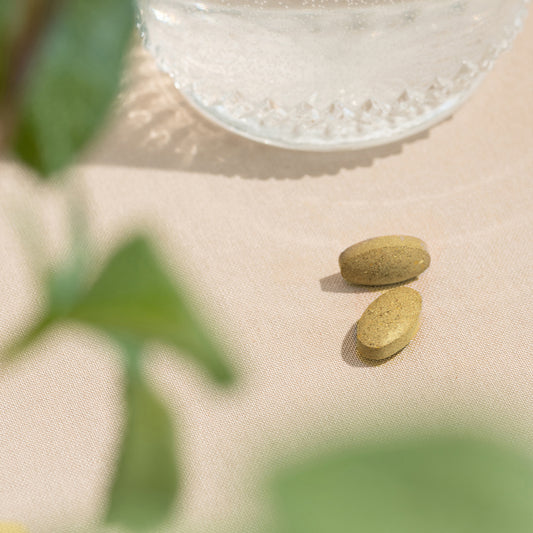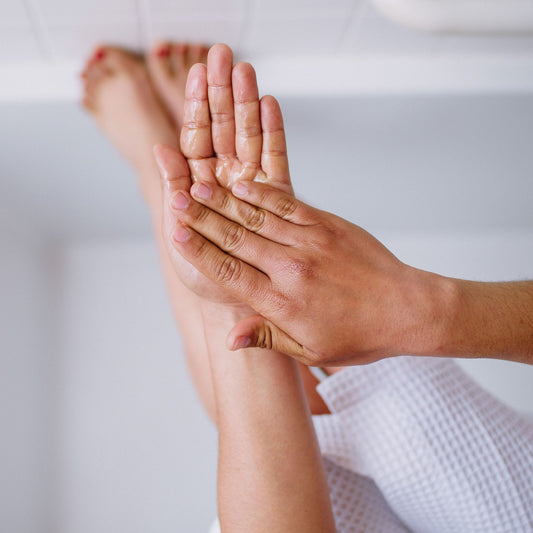Balance Kapha with Lifestyle Practices

Based on your current state of balance, we recommend that you follow a
In
Because every substance and experience we encounter has the potential to influence our health, there truly are an infinite number of ways to support your path toward balance. This resource will give you the foundational tools necessary to begin to adapt your lifestyle in favor of reducing kapha.
A Qualitative Perspective
As a starting place, it's helpful to understand which types of influences will be most supportive. Kapha is balanced by experiences that are:
- Light (think energizing, inspiring, and joyful).
- Sharp (think engaged, discerning, and penetrating).
- Warm (think in terms of both physical and emotional warmth).
- Dry (think arid, absorbing, and emotionally detached).
- Rough (think stimulating and
- Mobile (think active, directional, and purposeful).
These qualities help to balance kapha's heaviness, inertia, and its cool, dull, oily, wet nature. They are also a perfect antidote to excess kapha's tendency toward stagnation and lethargy.
While incorporating kapha-balancing qualities into your day-to-day experience may require a bit of effort and consideration initially, with practice, it can become quite intuitive.
Elements of a Kapha-Pacifying Lifestyle
The most important thing you can do to balance kapha is to commit to getting regular exercise. This is one of the single-most effective ways to clear the mind and invigorate the body while balancing literally every single kapha quality. But please don't let this commitment feel heavy or obligatory—like something you “should” do, but don't want to—either.
Remember, you want more inspiration and joy in your life. So choose activities that are fun, challenging, and satisfying for you. In this scenario, exercise can become a gift, and doing it can actually begin to be its own reward.
Another helpful area to focus on is the elimination of as many ruts and lifeless habits as possible. Now is a great time to embrace more spontaneity, lighten up, and cultivate your capacity to think outside the box. Too much routine and monotony aggravate kapha, while changing things up is very balancing.
Consider bolstering your confidence by surrounding yourself with a community of support: an accountability partner, exercise buddies, and friends who will bring out the adventurer in you. These are fantastic ways to encourage your own success.
Below, you will find a few suggestions to get you started. Please try not to feel daunted. Aggravated kapha can bring out the pessimist in anyone, but you need not try to do everything. Even just one or two intentional shifts can have a dramatic impact. This is a perfect opportunity to embrace taking one manageable step at a time, and to resist the urge to throw in the towel if you start to feel discouraged.
Instead, draw on kapha's reserves of strength and endurance to create some dedication and persistence, and ask for support wherever possible. The best approach when balancing kapha is to follow your inspiration, to take on only what feels doable now, and to build on your commitments over time.
Daily Routine
Ayurveda is big on daily routines. In fact, following an appropriate daily routine is an essential
While consistency is among the most important aspects of a daily routine, that doesn't mean that you are required to keep a rigid schedule. In fact, kapha does well to balance routine with spontaneity.
So think of the repeating aspects of your routine as tools for creating enough predictability to anchor your system in a sense of normalcy and alignment each day. And then you can pepper in open windows of time specifically designated to encourage freedom and adventure.
Your routine might be as simple as getting up and going to bed at the same times each day and exercising a designated number of times per week, or it might be quite a bit more elaborate. Either way, it should only include elements that you trust you can successfully engage with on a regular basis. The best places to start when creating more consistency include sleep and wake times, meal times, and an exercise schedule.
You might also want to consider waking up by 6 a.m., when kapha tends to weigh things down with an added sense of heaviness and inertia in the atmosphere. If we're still sleeping when the extra kapha rolls in, it can actually cause a certain sluggishness and lack of clarity throughout the day. While it's not likely that waking up comes easily to you, you may notice that by getting enough rest, and rising no later than 6 a.m., you feel better all day long.
Below are a few particularly kapha-pacifying elements to consider including as you craft your routine. For more support and ideas, please see our guide to creating a Kapha-Pacifying Daily Routine.
Exercise
As we have already seen, the qualities of exercise are extremely balancing for kapha, so any exercise will be beneficial. That said, taking a few simple steps to adapt your approach to exercise could encourage a far more efficient return to balance.
While kapha responds best to vigorous and challenging workouts, it's also important to prioritize making them fun and inspiring. Otherwise, we might find any number of excuses not to exercise.
Working out during the kapha times of day (6–10 a.m. and p.m.) will be especially beneficial and can help to shake off the increased heaviness of these times of day. But if these windows of time don't work for you, any time of day will do.
Celebrate kapha's endurance by embracing longer adventures and explorations as often as you like. You may also find it helpful to change things up regularly, consciously engaging with the newness of each workout.
In general, exercise at about fifty percent of your capacity—honoring your current condition, challenging yourself appropriately, and steadily improving your condition without undue strain. Experiment with pushing yourself where you might normally tend to relax the pace, and also play with finding a pace that you can maintain for longer periods of time.
Exercising outdoors can help to feed your spirit and inspiration. Most importantly, get creative about ways you can bring joy and pleasure into your physical activities—celebrating your life, your body, and your adventures alike. For more on this topic, please see our resource on The Kapha-Pacifying Approach to Fitness.

Yoga
As an important sister science to Ayurveda, the practice of
While there are any number of
Intentionally create a sense of warmth, engagement, muscular effort, and expansiveness. Be careful not to get chilled, and better yet, practice in a space that allows the body to stay comfortably warm. Cultivate a sense of buoyancy by maintaining a sharp, upward gaze, while keeping the chest open and lifted throughout your practice.
Use a strong, forceful breath, with a brief pause between the inhalation and the exhalation, and when you prepare to release a pose, take one more full, deep breath before you do so. Invite your movements to be well-paced and invigorating, focusing on the subtlety in each pose and noticing the expansiveness created in your energy body. Embrace variety by changing things up regularly. And most importantly, have fun!
For more support in tailoring your yoga practice, please see our resource on Kapha-Pacifying Yoga.
Pranayama
The practice of
Once that feels natural and comfortable, there are a couple of practices that can be added for powerful support with balancing kapha. Bhastrika (also known as Bellows Breath) is a heating practice that burns accumulated toxins and stokes the inner fire—supporting proper digestion on all levels.
Kapalabhati (or Skull Shining Breath) tones the digestive organs and strengthens the core while bringing lightness and clarity to the mind. Committing to just ten or fifteen minutes of pranayama each day can dramatically improve one's state of mind and overall well-being. These practices offer a practical and effective means of tending to needs of the physical, mental, and emotional spheres all at once.
Awareness Is Everything
In Ayurveda, especially when we're talking about lifestyle, just about anything can be medicine (or poison, for that matter). At the most fundamental level, following a kapha-balancing lifestyle is about inviting more kapha-pacifying qualities into your day-to-day experience, whether through specific, focused practices, the overall attitude you cultivate towards life, or both.
This is why fostering awareness is so critically important. With a little effort, we can become quite astute at knowing which types of experiences are going to support our health, and which might tend to sabotage our well-being.
Choosing to follow a kapha-balancing lifestyle is a simple matter of practicing more discernment. It is an invitation to intentionally fill our days with supportive types of experiences, while limiting those that will be less so. As our understanding deepens, and as we begin to understand how, the very way we move through life becomes a powerful opportunity for healing.
More for You
A Kapha-Balancing Approach to Fitness
Learn how to best balance kapha with fitness. These tips will help you with your exercise routine and in the broader context of your life.
Kapha-Pacifying Yoga
A yoga practice for a kapha individual should be one creating space, stimulation, warmth, and buoyancy. Kaphas can cultivate this by following some basic guidelines.










